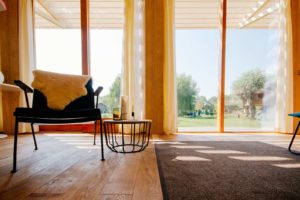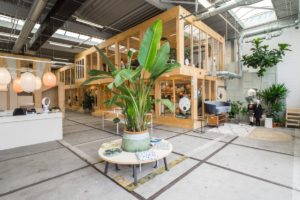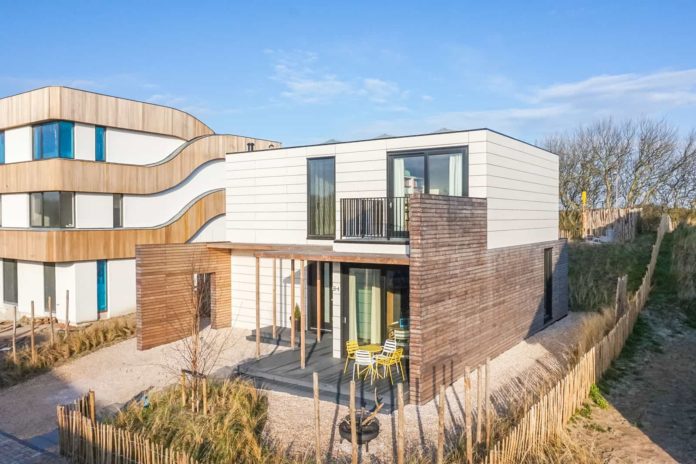Editor’s note: This is the first installment of a series focusing on social impact startups. Stay tuned for more.
Inspired by LEGO. Unlimited number of designs with a limited number of components. Leader in sustainable and circular construction.
These are just some of the phrases Sustainer Homes uses to describe its building system and software platform. The social impact construction tech startup is rethinking how we build homes, designing them in the most sustainable way possible by integrating renewable energy to minimize CO2 emissions, and using as few materials as possible.
The startup’s modular system allows any architect or builder to turn almost any design into a fully circular, carbon-neutral building to create radically sustainable homes. Its system integrates every technical challenge in one building model, speeding up the building process while saving costs – without sacrificing design.
“Sustainer Homes shows that with current technology sustainable living and living comfort can go hand in hand,” said The Climate Coalition, a UK-based coalition of 130 organizations advocating for protection from climate change.
The beginnings: homes from shipping containers
Founded in 2014 in Utrecht and an alumnus of Startupbootcamp, Sustainer Homes started by building houses from shipping containers that are self-sufficient and portable, with the aim of providing millennials with affordable yet sustainable homes. Sustainer Homes focuses on energy, air and heating, water collection, as well as disposal and materials to build fully independent, sustainable homes that can be taken off-grid.
Each shipping container home uses electricity produced by a combination of solar panels and windmills, ensuring enough energy for year round consumption. A highly efficient heat pump combined with high grade insulation makes them warm in the winter and cool in the summer, while water is collected from the roof of the container, and filtered for safe drinking. Used water is then passed through a plant based filter and released back into the ground. All of the construction materials are reusable, as well as recyclable.
The switch to modular wooden building systems
Realizing that shipping containers weren’t enough, Sustainer Homes has since pivoted to developing modular wooden building systems, drawing on its expertise and experience in building sustainable, modular, and portable homes.
 Its building system and software platform generates drawings, 3D models and provides project management and preparation for architects and builders. Sustainability is achieved through the following core components: type & amount of materials used, construction methods, and design.
Its building system and software platform generates drawings, 3D models and provides project management and preparation for architects and builders. Sustainability is achieved through the following core components: type & amount of materials used, construction methods, and design.
This sustainable and circular construction system only uses natural and renewable materials, and as few of them as possible, to create high-quality, long lasting homes. The structural skeleton of a Sustainer Home consists of certified wood from strictly managed Finnish forests with hardly any use of polluting materials such as plaster, cement, concrete, or steel. Less materials are used in the process by combining Japanese woodworking techniques, robot-driven manufacturing, and using evolutionary algorithms in the design process.
 Each Sustainer Home is designed for the future, with a maximum life span. They are extremely well insulated, equipped with triple glass, airtight, damp-proof, and equipped with high-quality climate systems and solar panels.
Each Sustainer Home is designed for the future, with a maximum life span. They are extremely well insulated, equipped with triple glass, airtight, damp-proof, and equipped with high-quality climate systems and solar panels.
No two homes are alike; they are tailored to specific customer design requirements. From floor-to-ceiling windows, perfectly customized ceilings, to stairs built from Sustainer Home’s own algorithm – everything can be built to specific details and under optimal, controlled conditions. What’s more, the actual construction of the homes takes only a few weeks.
Sustainer Homes today
Since it was founded, over 50 Sustainer Homes have already been sold or are currently under construction. This year Sustainer Homes is focusing on perfecting its system, and preparing to scale production with several big projects in the Netherlands.
The startup is already working together with project developers, housing corporations and large construction companies to use their building system in social housing projects. Testing is going on behind the scenes and will be widely available by mid-2020. Due to the complexity in regulations and the quick pace of innovation, they have decided to focus on the Netherlands first and start expanding throughout Europe (eventually the rest of the world) as soon as their concept is brought to scale.

One of Sustainer Homes notable collaborations include The Green Village, where they have already built two homes, as well as the Office Lab, a testbed in which all kinds of office related innovations can be researched. The Office Lab was designed to be flexible, adaptable and modular so that different parties can easily install and research their innovations. Green Village notes that both the homes and Office Lab realized with Sustainer Homes were precisely in line with their wishes and requirements and the finished products were very beautiful.
The future is radically sustainable homes
In 2018, the founders of Sustainer Homes were included in Europe’s Forbes 30 under 30 list under the category of social enterprises for developing a modular system that designs and constructs radically sustainable homes, while cutting 90% of CO2 emissions.
The startup considers itself the social enterprise aiming to make the biggest impact possible in reducing the carbon footprint in the building industry, which still accounts for one-third of the global CO2 emissions.
“If we want to live sustainably with ten billion people, we will need to re-invent the way we construct our buildings,” said CEO and co-founder Gert van Vugt. “We’ve already shown how to make individual homes in a fully sustainable way. In five years, we have modernized the building process as well, with an industrial, standardized supply chain covering most of Europe. We will look back at the current way of building and think: ‘why didn’t we do this decades ago?’”




